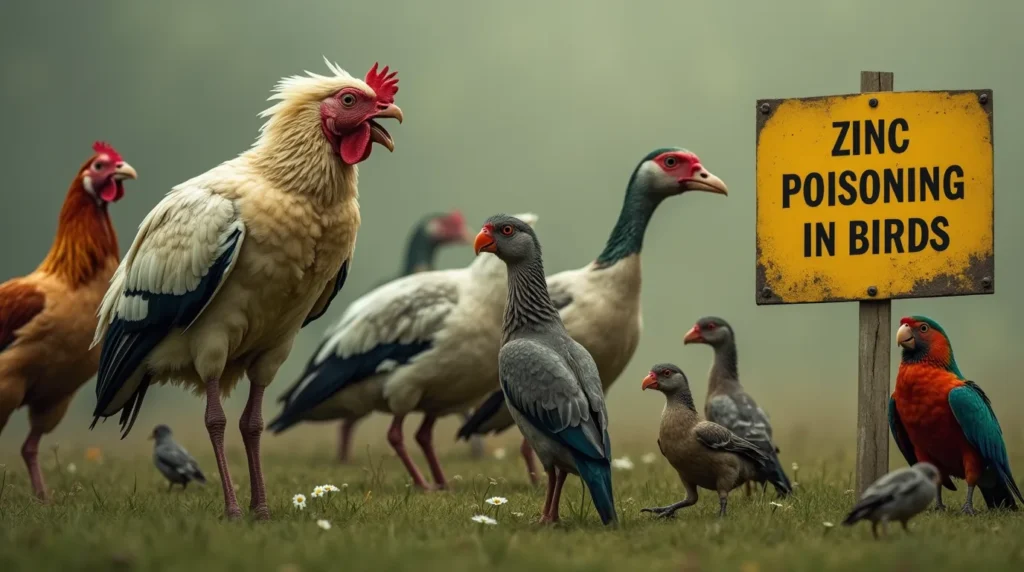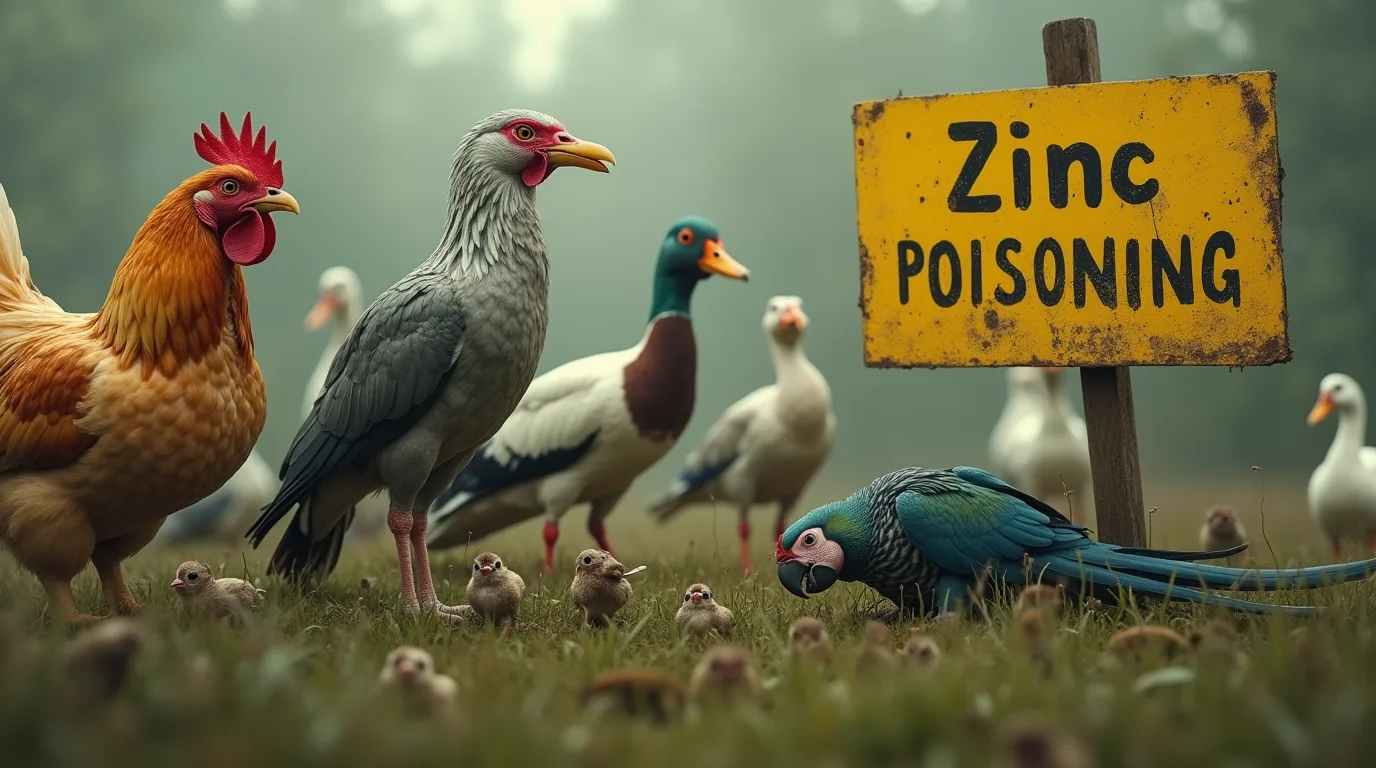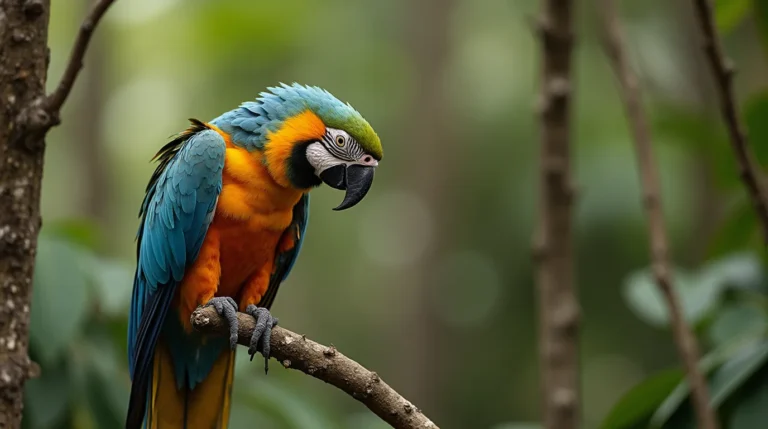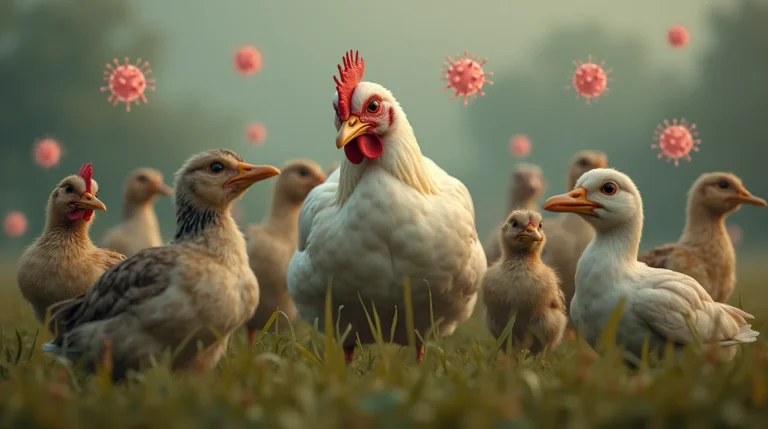Protect your feathered friends from zinc poisoning in Birds ! Discover 5 critical sources of zinc toxicity in birds and learn essential prevention strategies for bird owners.

Table of Contents
Bird owners and avian enthusiasts, beware: zinc poisoning is a silent yet potentially deadly threat to our feathered companions. While many pet owners are unaware of this critical health risk, understanding the sources and prevention methods can literally save your bird’s life. Zinc poisoning in birds is a serious condition that can lead to severe health complications and even fatal outcomes if left unchecked.
In this comprehensive guide, we’ll explore the five most common sources of zinc poisoning in birds, provide expert insights into identification and prevention, and equip you with the knowledge to protect your avian friends from this hidden danger.
Understanding Zinc Poisoning in Birds
What is Zinc Poisoning?
Zinc poisoning occurs when birds are exposed to excessive amounts of zinc, a metal that can accumulate in their bodies and cause significant health problems. Unlike some other heavy metal toxicities, zinc can enter a bird’s system through multiple everyday sources that many pet owners might not recognize.
Why Birds Are Particularly Vulnerable
Birds have unique physiological characteristics that make them exceptionally sensitive to zinc toxicity:
- Smaller body mass compared to mammals
- Higher metabolic rates
- More porous respiratory systems
- Tendency to explore environments through pecking and chewing
5 Common Sources of Zinc Poisoning in Birds
1. Metal Cage Components and Accessories
Potential Zinc Sources:
- Galvanized wire cages
- Metal cage clips and fasteners
- Decorative metal toys
- Cage bottom trays with metal coatings
Prevention Strategies:
- Choose powder-coated or stainless steel cages
- Regularly inspect cage components for signs of wear
- Replace zinc-containing accessories with bird-safe alternatives
2. Household Objects and Decorative Items
Surprisingly, many common household items can be zinc hazards:
- Painted ceramics
- Costume jewelry
- Zippers
- Certain types of pennies (particularly those minted after 1982)
- Metal keys
Risk Mitigation:
- Keep birds away from loose metal objects
- Store jewelry and small metal items securely
- Supervise birds during out-of-cage time
3. Water and Food Containers
Zinc Contamination Sources:
- Galvanized metal water dispensers
- Zinc-coated feeding dishes
- Metal brackets holding containers
Recommended Actions:
- Use ceramic, glass, or high-quality stainless steel containers
- Avoid containers with visible rust or deterioration
- Replace metal attachments with bird-safe materials
4. Environmental Exposures
Zinc can enter a bird’s environment through multiple channels:
- Paint chips from older buildings
- Industrial area pollutants
- Soil contamination near manufacturing sites
- Construction materials
Environmental Protection:
- Maintain a clean, controlled indoor environment
- Use air purifiers
- Avoid exposing birds to areas with potential metal contamination
- Regular environmental testing if concerned
5. Medical and Care-Related Items
Unexpected zinc sources in veterinary and care contexts:
- Some veterinary surgical instruments
- Certain medical bandages
- Zinc-containing supplements
- Medications with zinc compounds
Professional Guidance:
- Consult avian veterinarians about zinc-free treatment options
- Request detailed information about supplement compositions
- Verify medication ingredients before administration
Symptoms of Zinc Poisoning in Birds
Early Warning Signs
- Lethargy
- Decreased appetite
- Unusual droppings
- Weight loss
- Weakness
Advanced Symptoms
- Neurological issues
- Tremors
- Difficulty breathing
- Organ failure
- Sudden death
Diagnostic Procedures
Veterinary Assessment
- Blood tests measuring zinc levels
- Heavy metal toxicity screening
- Comprehensive physical examination
- Potential X-rays or imaging studies
Treatment Protocols
- Immediate veterinary intervention
- Chelation therapy
- Supportive care
- Dietary modifications
- Environmental remediation
Recommended Pet Products on Amazon
Frequently Asked Questions (FAQ)
Q1: How quickly can zinc poisoning affect a bird? A: Zinc poisoning can develop rapidly, sometimes within days or weeks of consistent exposure.
Q2: Are all bird species equally susceptible? A: Sensitivity varies, but smaller birds like parrots and finches are typically more vulnerable.
Q3: Can zinc poisoning be completely cured? A: Early detection and professional treatment significantly improve recovery chances.
Conclusion
Protecting your birds from zinc poisoning requires vigilance, knowledge, and proactive management. By understanding potential sources and implementing preventive strategies, you can create a safer environment for your feathered companions.
Call to Action
Share your experiences with bird safety in the comments below! Have you encountered zinc-related challenges? Your insights could help fellow bird owners protect their pets.
For more expert pet care guides and comprehensive resources, visit BlithePet – your trusted partner in animal wellness.
Disclaimer: This article is for informational purposes and should not replace professional veterinary advice. Always consult with a qualified avian veterinarian for specific health concerns.





